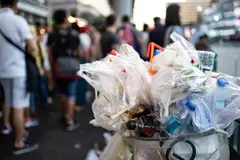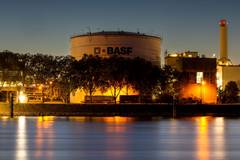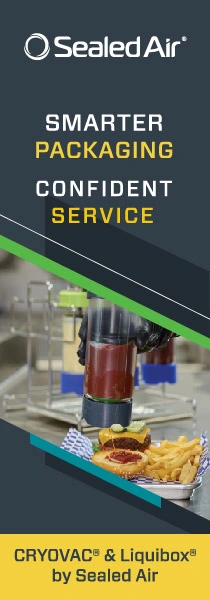Packagers innovate to meet regulatory and consumer pressures while tackling material challenges
With growing consumer expectations and tightening regulations driving the push for more sustainable packaging, companies must innovate to balance practicality, cost-effectiveness, and environmental responsibility.
Packaging Insights speaks with ProAmpac, UPM Raflatac, and Innova Market Insights to explore the latest advancements shaping sustainable packaging.
According to Amir Saffar, director of global sustainability at ProAmpac, the key trends driving sustainability within the industry are monomaterial structures, fiber-based solutions, PCR content integration, and regulatory-driven innovations.
“As brands shift toward recyclability, there’s a growing demand for monomaterial films that meet performance requirements while fitting into established recycling streams.”
“Increased focus on replacing traditional plastics with fiber-based materials that offer curbside recyclability. More brands are exploring PCR content and refillable packaging models to minimize waste. Governments worldwide are implementing EPR regulations, pushing for more sustainable packaging solutions,” he adds.
Suvi Rasa, sustainability manager at UPM Raflatac, tells us: “The primary trends in sustainable packaging are centered on designing packaging with recyclability in mind and improving packaging circularity.”
“These trends are being reinforced by emerging legislation, such as the new Packaging and Packaging Waste Regulation 2025/40 (PPWR) in Europe, which is helping to set clear criteria for packaging materials to ensure alignment across industries and markets.”
Katie Reid, customer success analyst at Innova Market Insights, highlights that “the top region in new F&B launches [2020–2024] tracked with an environmental filter is West Europe, accounting for 33% of new launches [Global, 2020–2024]. We are seeing the fastest growth in Africa [+21%], East Europe [+7%], and the Middle East [+6%].”
ProAmpac’s ProActive Sustainability
Saffar says that sustainability is at the core of packaging innovation at ProAmpac. “Our ProActive Sustainability platform focuses on recyclable, recycle ready, using PCR content, compostable, and renewable packaging solutions while optimizing material efficiency.”
 The Recyclable Fresh Tray FT-1000 PP-based tray supports fresh food applications (Image credit: ProAmpac).The platform includes the ProActive Recyclable Fresh Tray FT-1000, “a curbside recyclable polypropylene-based tray designed to support fresh food applications,” and the ProActive Recyclable R-2150D EU Film, “a high-barrier, monomaterial PE-based film designed for food applications, offering recyclability without compromising performance.”
The Recyclable Fresh Tray FT-1000 PP-based tray supports fresh food applications (Image credit: ProAmpac).The platform includes the ProActive Recyclable Fresh Tray FT-1000, “a curbside recyclable polypropylene-based tray designed to support fresh food applications,” and the ProActive Recyclable R-2150D EU Film, “a high-barrier, monomaterial PE-based film designed for food applications, offering recyclability without compromising performance.”
Reid says that monomaterial solutions are a primary current trend in sustainable packaging. “Single-material packaging simplifies the recycling process and reduces contamination. This approach is becoming more common as companies prioritize the recyclability of their products.”
ProActive Sustainability also includes HandRap with RecycAll Paper — “an award-winning fully recyclable sandwich pack designed for fiber-based recycling streams.”
Saffar adds that ProAmpac’s material science capabilities allow it to develop “high-performance, recyclable packaging that meets both sustainability and functional needs.”
Reids points out: “Consumers are increasingly demanding packaging that can be recycled or reused. Companies are responding by exploring alternative materials like paper, fiber-based solutions, and compostable options. ”
“New F&B launches tracked with an environmental packaging filter have increased by +5% in the past five years [Global, 2020–2024]. One in three new F&B launches tracked with an environmental filter is ‘recyclable.’”
Saffar says that ProAmpac collaborates closely with brands to customize solutions that reduce material usage, increase recyclability, and maintain product protection. “Our ProActive Sustainability platform is designed to meet evolving regulations while helping customers transition toward more responsible packaging formats.”
Paperization and reuse
Finnish self-adhesive paper and film label materials company UPM Raflatac supports its customers with transitioning toward more sustainable packaging solutions, according to Rasa.
 The OptiCut WashOff label is for returnable and reusable plastic food containers (Image credit: UPM Raflatac).“Our recent sustainable labeling launches include the innovative New Wave paper label material. Aimed at promoting recyclability, it is the first RecyClass-certified paper label material to obtain a Letter of Compatibility for use on rigid high-density PE (HDPE) and PP containers. The test results even confirm compatibility for natural and white material streams, which require the highest purity of recyclate from the recycling processes,” she explains.
The OptiCut WashOff label is for returnable and reusable plastic food containers (Image credit: UPM Raflatac).“Our recent sustainable labeling launches include the innovative New Wave paper label material. Aimed at promoting recyclability, it is the first RecyClass-certified paper label material to obtain a Letter of Compatibility for use on rigid high-density PE (HDPE) and PP containers. The test results even confirm compatibility for natural and white material streams, which require the highest purity of recyclate from the recycling processes,” she explains.
“To help facilitate reuse, we recently introduced our direct thermal linerless wash-off label offering. The OptiCut WashOff label is specifically designed for returnable and reusable plastic food containers, including PP, HDPE, and PET crates used in food logistics,” she continues.
UPM Raflatac continues to expand its Carbon Action Plastic Labels portfolio to help customers reduce their carbon footprint on their packaging materials. “Every product in the portfolio combines multiple circular economy R’s, ensuring recycling compatibility and increasing the use of beyond fossil components in plastics.”
Lack of recycling infrastructure
ProAmpac’s Saffar, UPM Raflatac’s Rasa, and Innova’s Reid all point to the lack of appropriate recycling infrastructure as a key challenge to ensuring the environmental sustainability and circularity of the packaging industry.
“One of the biggest opportunities is the acceleration of material science and recycling infrastructure to support circular packaging solutions,” says Saffar. “However, challenges remain, including recycling inconsistencies, balancing sustainability with performance, and consumer education.”
Concerning recycling inconsistencies, he explains that global variations in recycling infrastructure make it difficult to create a one-size-fits-all solution. Balancing sustainability with performance can be tricky because while brands seek sustainable materials, they also require the same level of protection, durability, and shelf life.
“Ensuring consumers understand proper disposal and recycling is essential for driving real sustainability impact,” he adds.
 Material science and recycling infrastructure support circular packaging solutions.Rasa points out: “Low recycling rates are being attributed to inadequate collection and sorting facilities. However, packaging made of mixed materials and chemicals is also preventing recycling or making it difficult to sort or process. Even something as small as the self-adhesive label becomes an integral part of the whole package, and recyclability is determined based on this.”
Material science and recycling infrastructure support circular packaging solutions.Rasa points out: “Low recycling rates are being attributed to inadequate collection and sorting facilities. However, packaging made of mixed materials and chemicals is also preventing recycling or making it difficult to sort or process. Even something as small as the self-adhesive label becomes an integral part of the whole package, and recyclability is determined based on this.”
“Although the main packaging component determines the recycling process, the self-adhesive label must be considered in terms of ‘recycling compatibility’ within the process. That is why we are working hard to create labels that help not hinder the recycling process, such as our innovative New Wave paper labels and Carbon Action plastic labels.”
Regulatory environment
Saffar notes that continued regulatory pressure will accelerate innovation in materials and recovery systems.
Meanwhile, Rasa explains: “Packaging must be made more circular by following design for recycling guidelines and meeting the compliance needs of legislation, such as the PPWR in Europe.”
“The European Commission will explore opportunities to set targets for increasing the use of biobased feedstock in plastic packaging. One option could be to use biobased plastic instead of recycled content for food-contact packaging. This shift aims to reduce reliance on finite resources while maintaining circularity in packaging systems.”
She says that UPM Raflatac aims to be at the forefront of these innovations with solutions such as our UPM Raflatac Forest Film and Carbon Action PP UCO labels. “These products are made with renewable, bio-based feedstocks, providing more sustainable alternatives to conventional fossil-based label materials without compromising performance.”
“By integrating these materials, we help businesses meet both regulatory requirements and sustainability goals, positioning them for success in an increasingly environmentally conscious market.”
Reid says that the future of sustainable packaging is bright. “As consumer awareness of environmental issues continues to grow, the demand for eco-friendly options will only intensify.”











